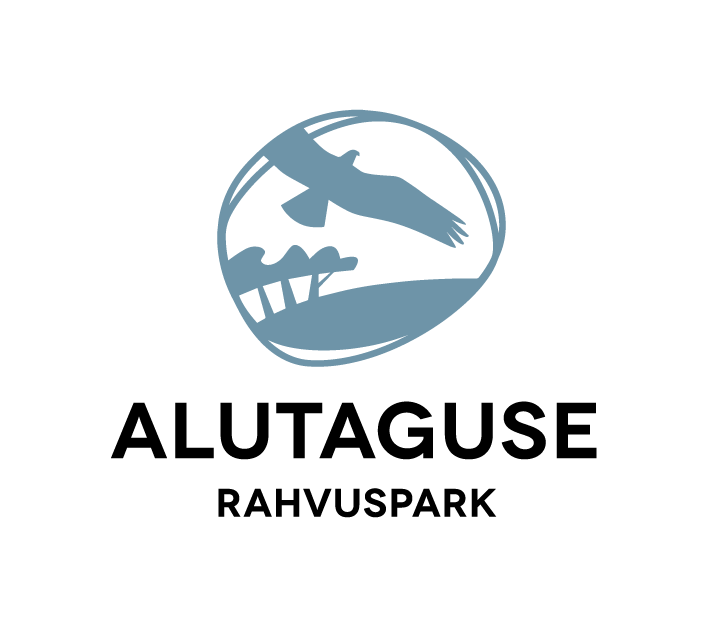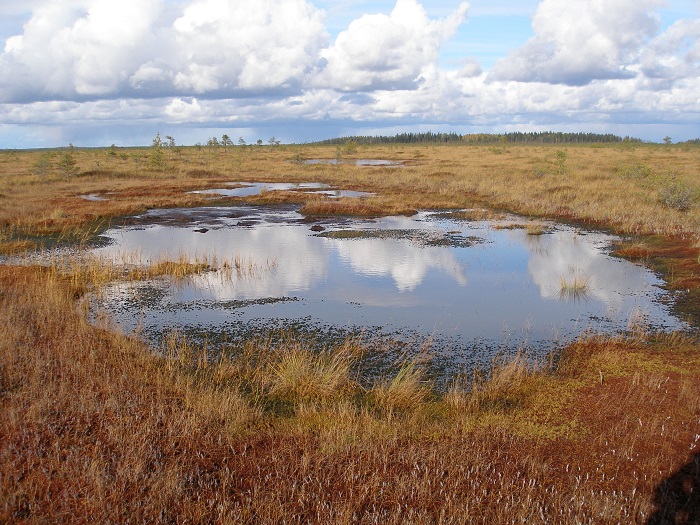
Muraka bog system
The Alutaguse National Park, Muraka Nature Reserve (13,980 ha) has been founded to protect one of Estonia’s largest and best preserved mire landscapes, protected species and their habitats. The Muraka Protected Area is a part of the Natura 2000 network, and one of the Ramsar wetlands of international importance.

Muraka wetland. Photo by Heldi Aia
The protected area consists of four detached plots of land, and encompasses fens and bogs at different development stages as well as natural forests. The protected area found its beginning in 1938 when a strict bog reserve for the protection of eagles was established. With the withdrawal of the continental ice sheet, relict lakes were formed in the northern part of the Peipsi Basin, which overgrew into fens 9,000–10,000 years ago. Fens grew into bogs, their borderlines widened and they merged, making up extensive wetlands where bog expanses are divided with swamps or quagmires. A range of bog islands and pools runs across the mire in the north-easterly – south-westerly direction. To the north, there are marshes and watery open bogs; the south has wooded and pool bogs. The core of the protected area – the Muraka Bog – is surrounded with the bogs of Lipu in the south, Matka in the south-east, and Ratva together with a relict lake in the north-east. The varied landscape of the Muraka wetlands provides habitats for numerous rare species. Valued primeval forests with the habitat of the flying squirrel (Pteromys volans) grow on the edges of the wetlands and on the island. 18 rare species of birds have been registered; geese and swans stop here on their migratory routes. Some rare insects, such as Cucujus cinnaberinus and Boros schneideri, have preserved in the protected area.
14 farms were located on the bog islands and in the surrounding forests until the middle of the 20th century. The ruins of the buildings or primeval trees are reminiscences of them.
The protected area can be studied in the Nature Room of the Oonurme Community House and on the Turba Hiking Trail.
Ida-Virumaa’s largest protected areas have been formed to protect the Alutaguse Wetlands, all of which being the parts of the Natura 2000 network. The naturally preserved mires are rare throughout Europe. Wetlands contain considerable stocks of clean water and it is important for both people and the species living there to protect them. Only 16% of the former territory of our wetlands has been placed under protection. Due to drainage, most bogs are not able to produce more peat. Nearly all Estonia’s greatest wildfires have takem place in drained bogs. The importance of wetlands is more and more acknowledged and possibilities for their restoration are actively being sought for. In addition to the drainage for the forest plantations and peat production, the county’s fens and bogs are also endangered by the oil shale mines and alkaline air pollution.
- Right of way: you can pass through and stay on private land from sunrise to sunset without causing disturbance to the owner or damage to the property.
- If the private property is fenced or posted against trespassing, the landlord’s permission is necessary.
- You can use a non-propelled floating craft to move around internal water-bodies.
- It is permitted to drive your motor vehicle on public roads and pathways. Parking is allowed within designated parking areas.
- Camping and making fires is allowed only in prepared and designated locations.
- Do not use growing trees or bushes for fire.
- Making fires during a high fire-risk periods is striclty prohibited, even in special camp-fire locations.
- Please make sure no detergents enter natural water bodies
- Please use appropriate toilet facilities
- Please keep your pets under control and on leads at all times, they are a threat to wild life.
- Picking up wild berries, mushrooms and flowers etc is allowed, unless it is a protected species.
- Do not desecrate the natural beauty of the area
- Please report any damage or theft you may witness to the natural habitat to this area to 1313 (Environmental Information)
More informations: loodusega koos and visit estonia